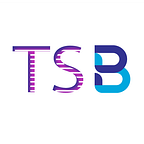Leased Proof of Stake or LPoS in Blockchain (Part 13- Blockchain Series)
Welcome to the 13th part of the 100 part series on Blockchain.
Previous parts: Part 1, Part 2, Part 3, Part 4, Part 5, Part 6, Part 7, Part 8, Part 9, Part 10, Part 11, and Part 12.
In the Proof of Stake (POS), users are required to stake their cryptocurrency coins by depositing them to nodes. The stakeholders with low amounts of staked coins are unlikely ever to get the chance to add a block — just as Delegated Proof of Stake (DPoS), where the users with small stakes will have less incentive to vote for the nodes to add blocks. Because of this reason, many stakeholders with low amounts of coins never actively participate in the network, so maintaining the consensus is left to a limited number of larger stakeholders. This creates unwanted centralization in the Blockchain network.
Leased Proof of Stake or LPoS consensus mechanism is a variant of POS and was introduced to solve the problems associated with POS and DPoS.
Leased Proof of Stake works exactly like PoS but uses leasing to provide nodes with small stakes, an incentive to take part in the consensus. The users can lease their coins to the nodes that participate in validating transactions and adding blocks to the Blockchain.
How does LPoS work?
(i) To start leasing, the coin holder needs to create a lease transaction and specify the recipient node address along with the number of coins to be leased. There is always an option to stop leasing by placing a cancel lease transaction.
(ii) The leased funds remain in full control of the coin holder/leaser. The coins don’t leave the wallet of the leaser, but they can link the coins to the nodes to whom they want to lease. The coins are not transferred to the node; they just remain unspendable: they cannot be transferred or traded until the leaser cancels the lease.
(iii) LPoS enables the leasers to participate in the consensus mechanism because the larger the amount that is leased to a node, the higher the chances for that node to be selected to generate the next block. For instance, in the below Fig, two leasers lease their coins to node B. The tokens that are leased to the node are used to increase the stake weight of the node, which in turn increases their chances of getting selected to validate transactions and add the next block to the Blockchain.
(iv) Upon winning, the node collects waiting transactions into a block. The winning node then receives the transaction fees as a reward.
(v) Upon receiving the reward, the node operators share a percentage of their node rewards with their leasers. The higher the leased amount, the more is the reward for the leaser.
Blockchain platforms using LPoS: Waves and NIX. In the Waves platform, the node must have at least 1000 WAVES in order to participate in generating blocks. The node’s balance can be empty until there are enough coin holders wishing to lease their coins to the node, thus, generating a balance of 1000 WAVES to make the node eligible to produce the block. If the node is selected to produce the next block, the leaser will receive a percentage of the transaction fee collected by the node.
If you liked this article and want to know more about Blockchain, NFTs, Metaverse, and their applications, click the below link.
Happy learning!
